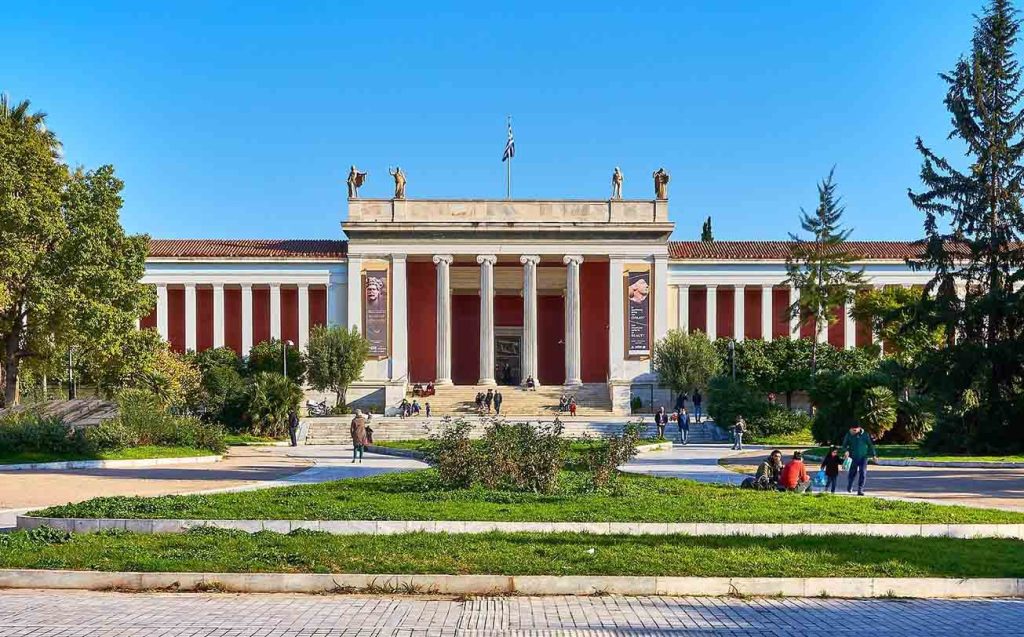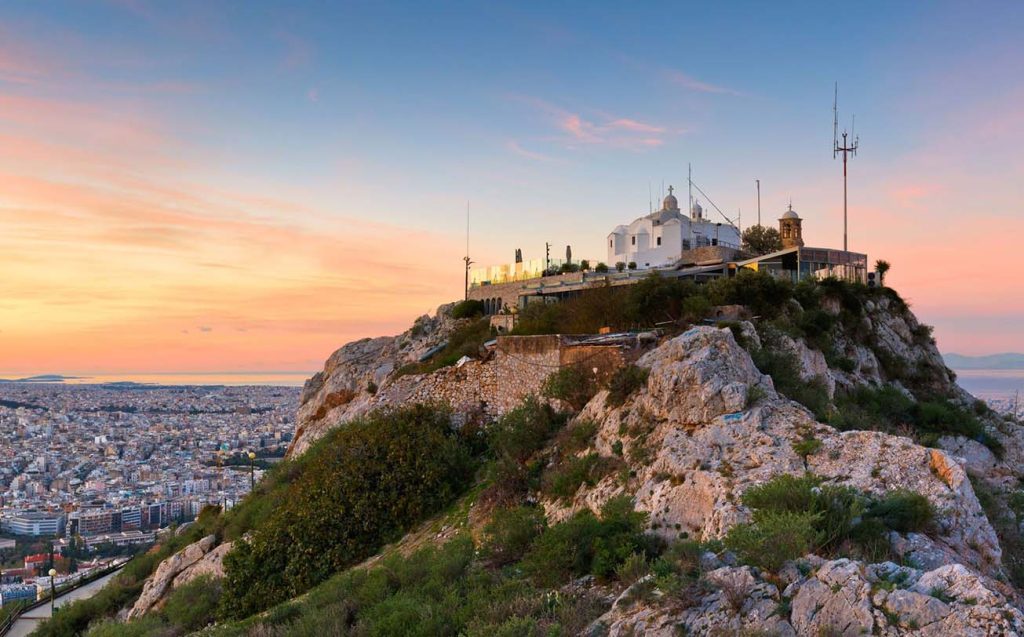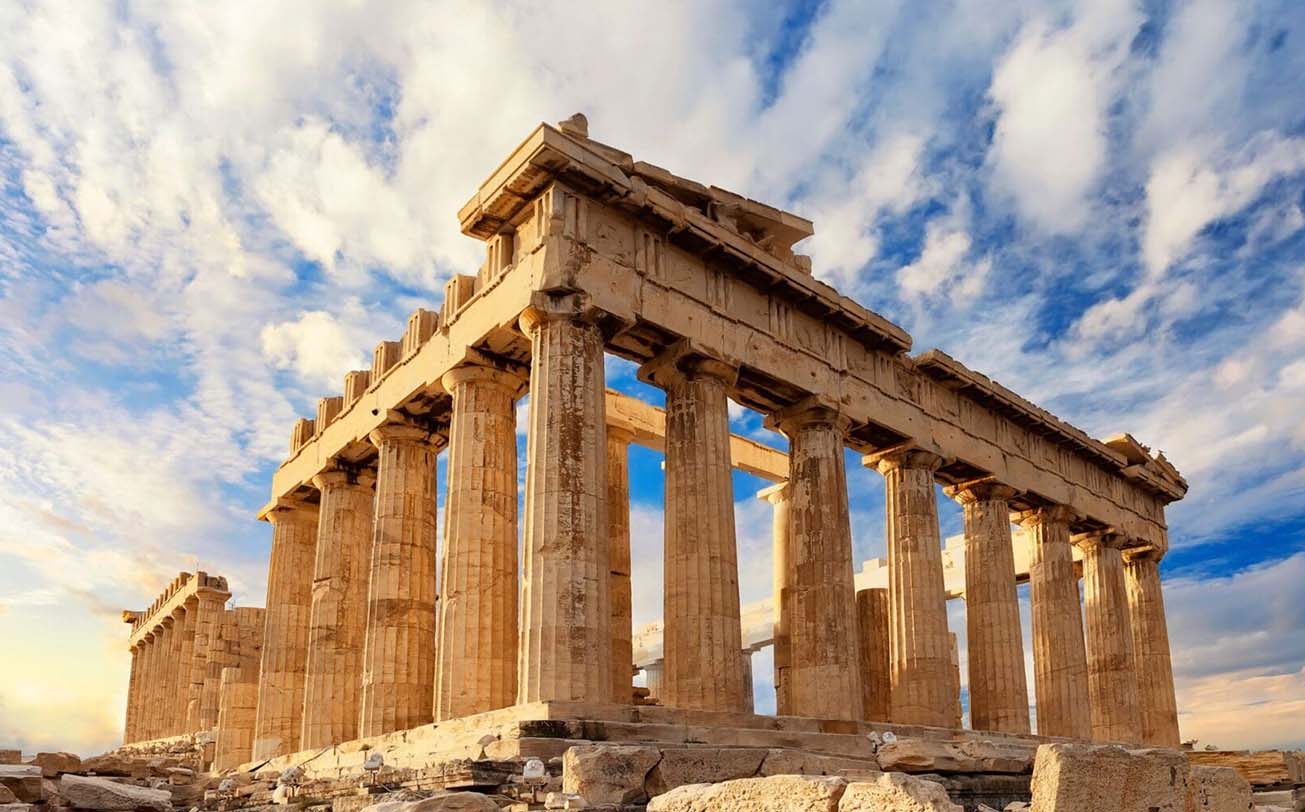Every city has a soul of its own, but Athens stands out as the most profound and complex city I’ve ever walked through. Here, the ancient ruins still retain their solemn dignity; here, the vibrant street life pulses with everyday energy. In Athens, the footprints of philosophers coexist with the vivid inspiration of contemporary art. From the moment I arrived, I knew this journey would be a cultural immersion into Greek civilization—from philosophy to art.
The Birthplace of Philosophy: The City of Socrates
On my first day in Athens, I eagerly made my way to the Ancient Agora. Covered now with wild grasses and shrouded in tranquility, it’s hard to imagine this place was once the bustling heart of the city—a crossroads of debate, commerce, religion, and politics. The birds chirped softly in the olive trees above, and the scent of wild thyme drifted in the breeze. It is said that Socrates himself debated in this very square, asking questions that seemed simple yet were profoundly thought-provoking: “What is good?”, “What is truth?”, “How should one live?”
Standing on the ground where he once pondered and spoke, I could almost hear his quiet reminder: “The unexamined life is not worth living.” In a modern world shaped by speed and distraction, this return to contemplative simplicity felt rare and precious. Here, philosophy wasn’t just a discipline—it was a lived practice, woven into the fabric of daily life. I carried a copy of Plato’s Republic with me and sat on sun-drenched stone steps to read it, as if time had rewound itself more than two millennia. A few local cats brushed past my legs, as if they too were guardians of the past. In that moment, surrounded by the echoes of Socratic inquiry, I felt a deeper stillness than I had known in a long time.
The Acropolis: Civilization Etched in Stone
At five in the morning, I left my hotel and walked up to the Acropolis. The streets were still quiet, with only my footsteps and the occasional birdsong accompanying me. As I reached the top, the first rays of sunlight pierced the clouds and landed gently on the white columns of the Parthenon. I was utterly moved. The light gave the marble a golden hue, as if the temple itself had awakened from centuries of sleep.
The Parthenon is not only a symbol of Greece but the pinnacle of classical architecture. Every curve of every column, every detail of every frieze, reflects the Greeks’ relentless pursuit of harmony and proportion. The Doric columns stood like sentinels guarding the city’s spirit, while the damaged yet dignified sculptures whispered stories of battles, gods, and ideals. Walking among these ancient marble stones, I imagined the rituals once held here in honor of Athena, imagined the robed philosophers or warriors who once paused on these very steps—and felt a strange overlap of time.
Inside the Acropolis Museum, I saw the preserved sculptures, statues, and everyday artifacts. They showcased not only technical mastery but a lifestyle that wove beauty into every aspect of existence. The Caryatids, with their flowing robes and stoic poise, seemed to carry the weight of both architecture and ideals. Here, beauty wasn’t just visual pleasure—it was a reflection of morality, spirit, and order. I found myself lingering, reluctant to leave the presence of such serene brilliance.
National Archaeological Museum: A Reunion with Myth

The depth of a culture often lies in its museums. The National Archaeological Museum of Athens was a highlight of my journey. Housing artifacts from the prehistoric era to the Roman period, it is one of the most comprehensive ways to understand Greek history. The neoclassical building itself, with its grand columns and echoing halls, felt like a temple dedicated to memory.
I lingered long before the golden death mask from the Minoan civilization—known as the “Mask of Agamemnon”—which sat silently in its glass case, exuding a timeless majesty. Its features, though stylized, seemed to convey both serenity and command. I admired the bronze sculpture of Artemis, poised as if about to leap from her sprint. The detail in her limbs, the dynamic tension in her stance, made the statue feel alive. Each artifact was not a static object, but the embodiment of myth and history, the vessel of collective memory.
As I walked through the exhibits, I listened to the audio guide telling stories behind each piece: Heracles and his twelve labors, Theseus and the Minotaur, Odysseus and his long voyage home. I imagined those myths layered over real landscapes—the cliffs, the seas, the mountain paths of Greece. Myths I had once read as a child were now no longer distant fantasies, but cultural echoes alive in the soil beneath my feet. It was a reunion not just with history, but with the imagination of a civilization that continues to shape the world.
Art in the Present: Graffiti and Contemporary Exhibits
Yet Athens is not merely a city of the past. It possesses a unique cultural tension—able to look back across millennia while also charging ahead with unrelenting creativity. In the neighborhoods of Psiri and Exarchia, I found streets alive with raw energy, filled with graffiti, sprawling murals, and stencil art that spilled across entire buildings. Bold, colorful, and socially charged, these works reflected the thoughts of Greek youth on politics, economics, migration, and freedom of expression. Unlike the preserved antiquities in museums, these artworks are evolving, ever-changing commentaries on the present moment.
One mural left a particularly deep impression on me: a blindfolded Athena holding a copy of Principles of Economics. The goddess of wisdom, her eyes covered, seemed to question the economic decisions that had led to Greece’s financial crises. It wasn’t just art—it was cultural awareness made visual, an urgent and intellectual protest that stayed with me. In a small gallery nearby, the “Breeder Gallery,” I attended an exhibit on urban regeneration. Video installations, mixed-media collages, and photography explored themes of decay and rebirth. The curator explained to me: “Greek artists are trying to bridge tradition and the present. This city is the canvas where that effort is unfolding. Our history isn’t just something we inherit; it’s something we actively negotiate every day.”
Music and Theater: From Taverns to Amphitheaters

One evening, I went to the Herodes Atticus Theater to watch a modern adaptation of a classical tragedy. Built in 161 AD and nestled at the foot of the Acropolis, this ancient stone amphitheater is still in use today, providing a rare setting where the ancient and contemporary converge. Sitting on the cool marble seats under the open night sky, surrounded by a quiet crowd and the faint rustle of summer leaves, I listened to actors reciting Aeschylus’ Agamemnon. Their voices echoed powerfully in the natural acoustics of the space, bringing timeless emotions—fate, guilt, justice—to life in a breathtaking way. I felt an overwhelming sense of ceremony, as if participating in a ritual that had endured for over two millennia.
The next night, I stumbled into a live performance at a small, dimly lit taverna in the Plaka district. The band played bouzouki, violin, and hand drums, their melodies tinged with both melancholy and joy. Locals, some elderly and others in their twenties, stood up spontaneously to dance the Sirtaki, arms linked and feet moving in perfect sync. Plates clinked, glasses were raised, and voices sang along with nostalgic refrains. In Athens, music and drama are not confined to grand venues—they are everywhere, alive in the courtyards, the bars, the cafes. They are not just art forms; they are integral parts of everyday life.
Philosophy in Daily Life
Even daily life in Athens feels infused with philosophical undercurrents. At street-side cafés, I often saw elderly men sitting for hours over a single cup of coffee, engaging in discussions about politics, history, or even the philosophical meaning of the Olympics. No rush, no urgency—everything unfolded naturally. This city seemed to whisper: slowness is a kind of wisdom.
At the central market, I chatted with an elderly woman selling olive oil. She told me her grandfather came from the Peloponnese, and her family had cultivated olive trees for over a hundred years. I asked why they hadn’t switched to growing grapes, which were more profitable. She smiled and said, “Because we’re not just planting trees—we’re planting time.”
A Moment of Reflection Before Departure

On my last day, I climbed once more to Areopagus Hill below the Acropolis. The wind was stronger, the sunlight softer. I sat on a rock, gazing toward Lycabettus Hill in the distance, and felt a swirl of emotions. This had not merely been a trip—it had been a cultural baptism.
Greece had taught me that beauty can be rational, that philosophy can be part of everyday life, that history is not sealed away in the past but forms the foundation of each present moment. The true charm of Athens lies not just in its ruins or stories, but in how it integrates its heritage into the lives of modern people—allowing it to ferment and evolve.
Whenever I think back to this journey, I recall the Parthenon’s long shadow in the morning sun, the questioning eyes in a graffiti mural, the echoes of ancient verses in a theater, and the joyous laughter in a taverna. In Athens, I felt I had touched every aspect of Greek culture—philosophy, art, faith, and the everyday—woven into a singular spiritual map. I didn’t leave the city with souvenirs; I left with a new way of seeing the world.




